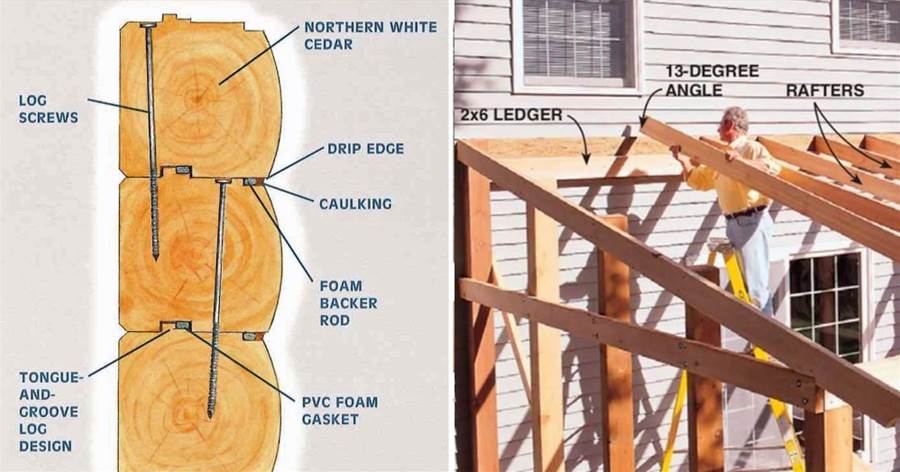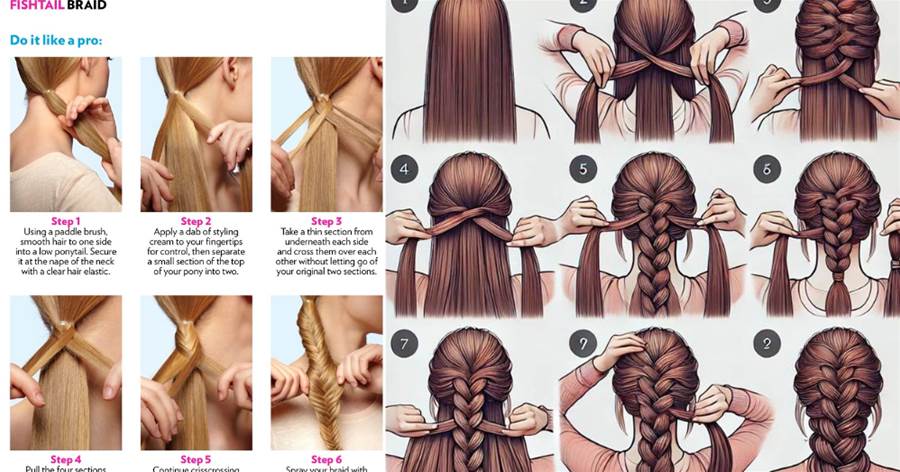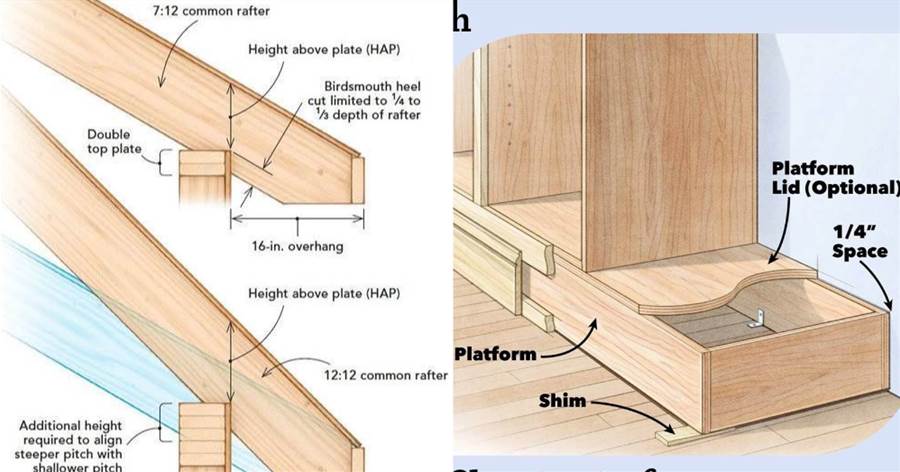

As a house builder, I know that mastering the basics is the key to building strong, safe, and beautiful structures. Whether you're framing a wall or laying out a deck, these beginner-friendly tips will make your first build smarter and smoother.
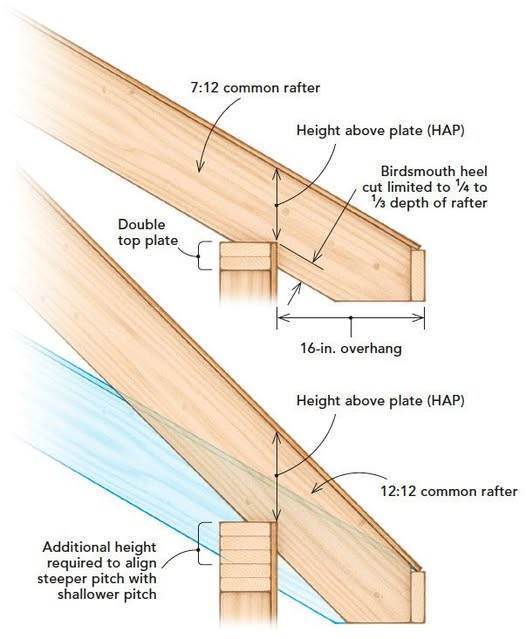
Rafters with different slopes (e.g., 7:12 vs. 12:12) require precise birdsmouth cuts for solid attachment.
Why it matters: Cutting too deep weakens the rafter. Keep the cut within 1/4–1/3 of its depth.
Tip: Use the Height Above Plate (HAP) to align pitches and ensure stability across the roofline.
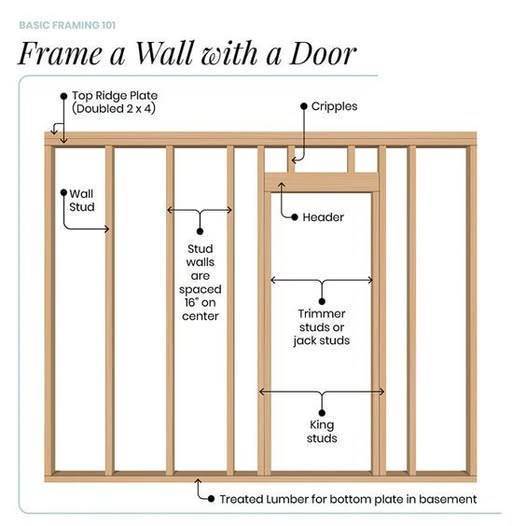
This wall framing diagram breaks down all key elements: king studs, jack studs, headers, and cripples.
Common mistake: Improper spacing or missing support studs can weaken door openings.
Best practice: Space wall studs 16" on center and double up headers for better load distribution.
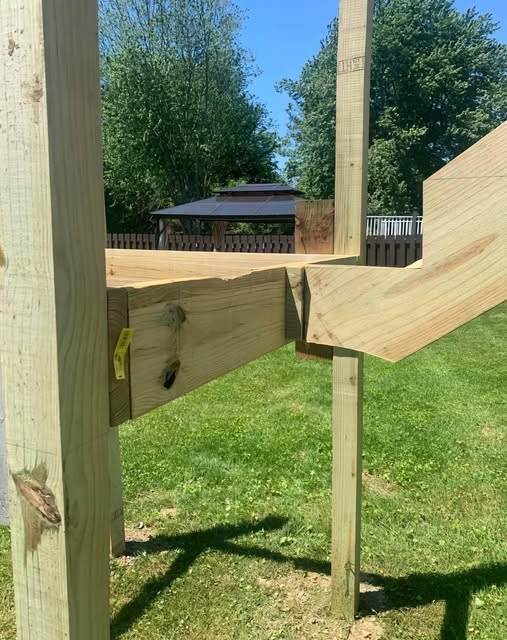
This on-site photo shows a strong but simple method to connect joists to posts without fancy hardware.
Challenge: Poor connections can cause deck bounce or collapse.
Why it works: Notching the post for the joist and securing it with bolts creates a firm, aligned joint.
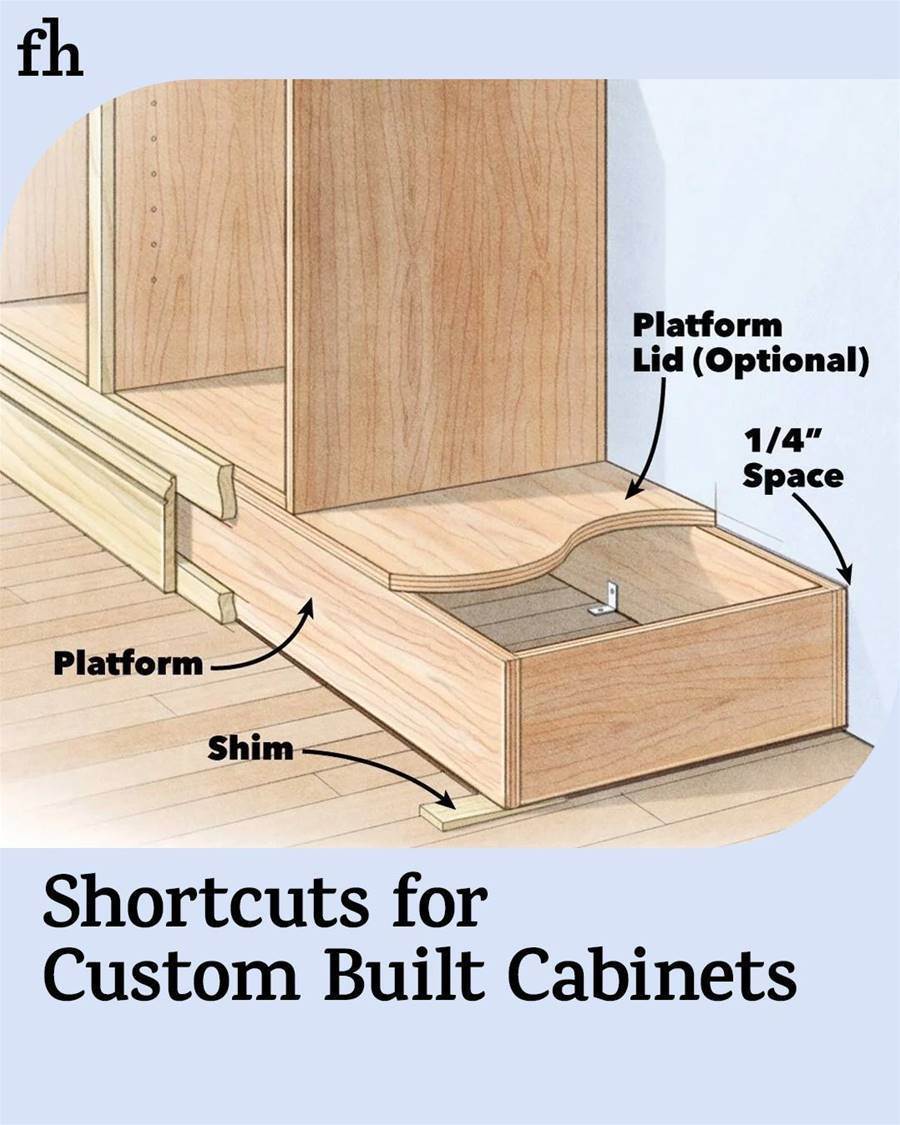
This diagram reveals a clever shortcut for installing custom cabinetry without perfectionist-level skills.
Advantage: Use a base platform and shims to level cabinets easily.
Bonus: Add a platform lid for hidden storage—smart use of space and easier adjustments.
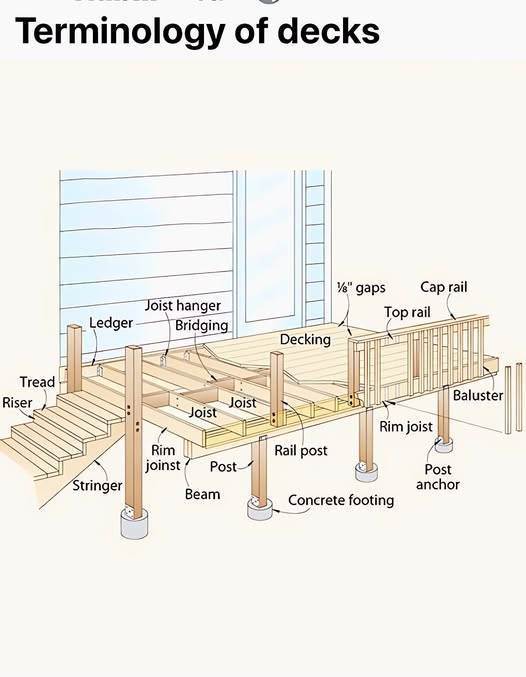
A labeled deck diagram helps you visualize all structural parts—from joists and beams to posts and stringers.
Pro benefit: Knowing these terms avoids confusion and boosts build confidence.
Best tip: Use joist hangers and bridging for long-lasting stability and balanced weight support.
Building a wooden structure is incredibly rewarding—but only if done right. Save this post, share it with fellow DIYers
, or print it for your next project. The more you learn, the stronger you build—and your home will thank you for it.
